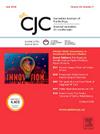Heart Function, Valvular Hemodynamics, and Early-term Outcomes of Possible Thrombosis in Self-Expanding Transcatheter Pulmonary Valve
IF 5.3
2区 医学
Q1 CARDIAC & CARDIOVASCULAR SYSTEMS
引用次数: 0
Abstract
Background
The clinical implications of hypoattenuating leaflet thickening (HALT) and its potential link to thrombosis detected via computed tomography (CT) scans in post transcatheter pulmonary valve replacement (TPVR) patients are unknown. In this study we aimed to explore the prevalence, heart function, valvular hemodynamics, and early outcomes of HALT after TPVR.
Methods
We studied 64 of 76 consecutive multicentre patients who underwent TPVR, with the implantation of a Venus-P device (Venus MedTech Inc, Hangzhou, China). CT characteristics within a year, echocardiographic data, and early-term clinical end points were analyzed in patients with and without HALT.
Results
CT scans revealed HALT in 28 patients (56%) and reduced leaflet motion in 11 patients (20.8%) within 1 year (median interval, 184 [interquartile range, 104-214] days). HALT patients exhibited a lower percentage of normal tricuspid annular plane systolic excursion at the CT scan time (58.3% vs 73.7%; P = 0.020), although valvular hemodynamics and clinical end points were similar. Older age at intervention (odds ratio, 1.05; 95% confidence interval, 1.01-1.09) and larger body mass index (odds ratio, 1.17; 95% confidence interval, 1.01-1.36) were associated with HALT, whereas the use of anticoagulation was not identified as a protective factor. The HALT severity was positively correlated with the degree of leaflet motion (r = 0.67 and 0.69, respectively).
Conclusions
HALT was highly prevalent, although it was subclinical. Early follow-up showed uneventful valvular hemodynamics and clinical outcomes. However, the HALT group exhibited suboptimal right ventricular function during CT scans, with older age and higher body mass index linked to this issue.
心功能、瓣膜血流动力学和经导管自扩张肺动脉瓣可能血栓形成的早期结局。
背景:tpvr后患者CT扫描检测的低衰减小叶增厚(HALT)的临床意义及其与血栓形成的潜在联系尚不清楚。本研究旨在探讨经导管肺瓣膜置换术(TPVR)后HALT的患病率、心功能、瓣膜血流动力学和早期预后。方法:我们研究了76例连续接受TPVR的多中心患者中的64例,并植入了Venus-P装置。分析了有和没有HALT的患者一年内的CT特征、超声心动图数据和早期临床终点。结果:CT扫描显示一年内28例(56%)患者出现HALT, 11例(20.8%)患者出现小叶运动减少(RLM)[中位间隔184天(IQR: 104 ~ 214)]。HALT患者在CT扫描时显示正常三尖瓣环状平面收缩偏移的百分比较低(58.3%对73.7%;P = 0.020),尽管瓣膜血流动力学和临床终点相似。干预时年龄较大(OR: 1.05;95% CI: 1.01-1.09)和较大的体重指数(OR: 1.17;95% CI: 1.01-1.36)与HALT相关,而抗凝的使用未被确定为保护因素。HALT的严重程度与小叶运动程度呈正相关(r分别为0.67和0.69)。结论:HALT虽然是亚临床的,但发病率很高。早期随访显示瓣膜血流动力学和临床结果正常。然而,HALT组在CT扫描中显示右室功能不理想,年龄越大和BMI越高与此有关。
本文章由计算机程序翻译,如有差异,请以英文原文为准。
求助全文
约1分钟内获得全文
求助全文
来源期刊

Canadian Journal of Cardiology
医学-心血管系统
CiteScore
9.20
自引率
8.10%
发文量
546
审稿时长
32 days
期刊介绍:
The Canadian Journal of Cardiology (CJC) is the official journal of the Canadian Cardiovascular Society (CCS). The CJC is a vehicle for the international dissemination of new knowledge in cardiology and cardiovascular science, particularly serving as the major venue for Canadian cardiovascular medicine.
 求助内容:
求助内容: 应助结果提醒方式:
应助结果提醒方式:


